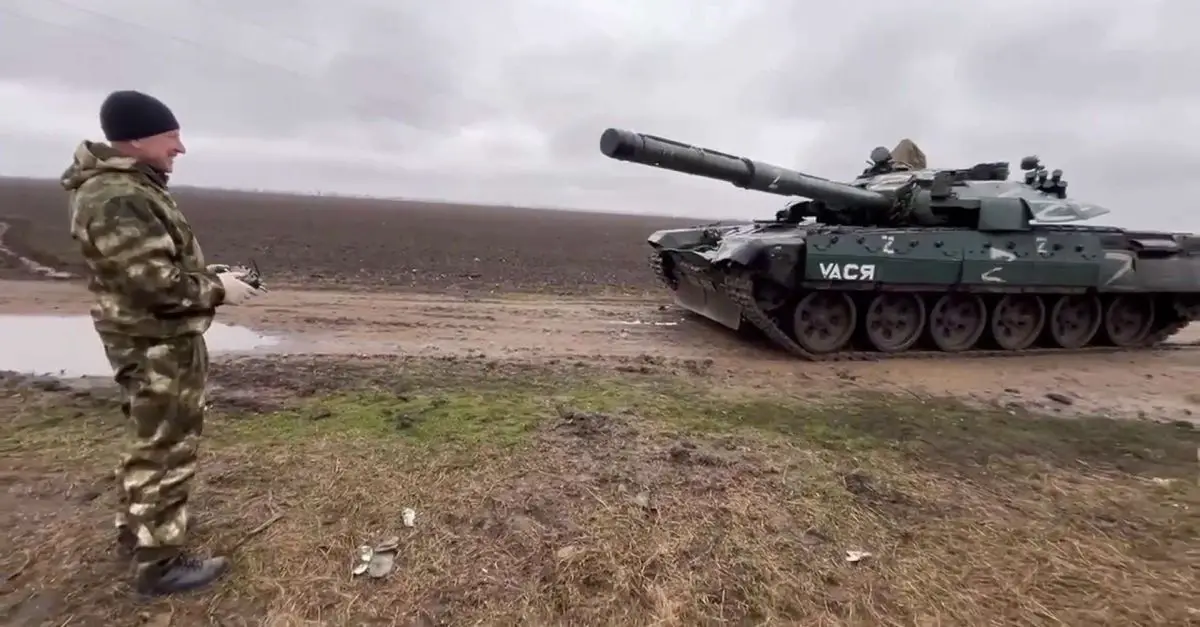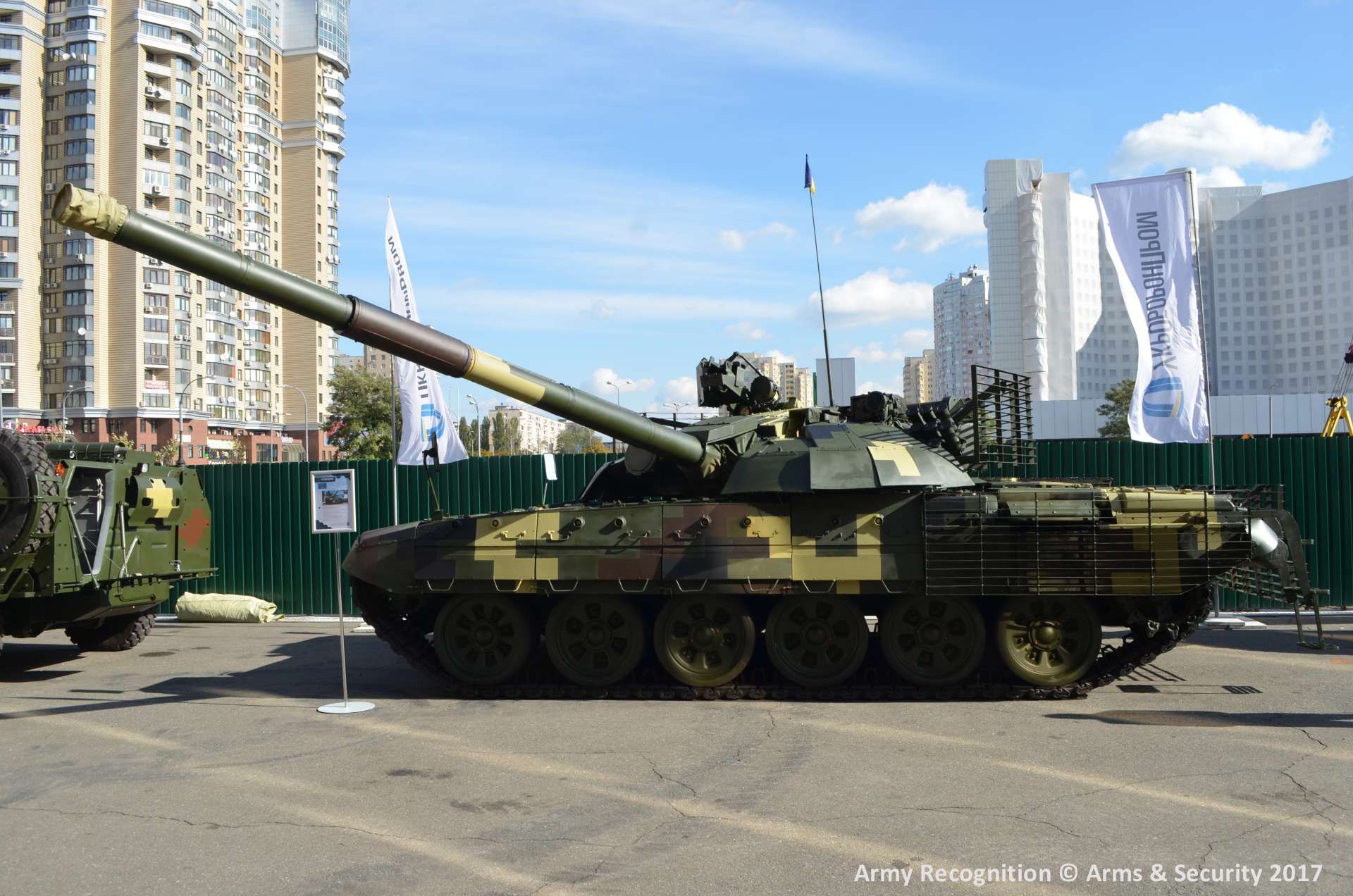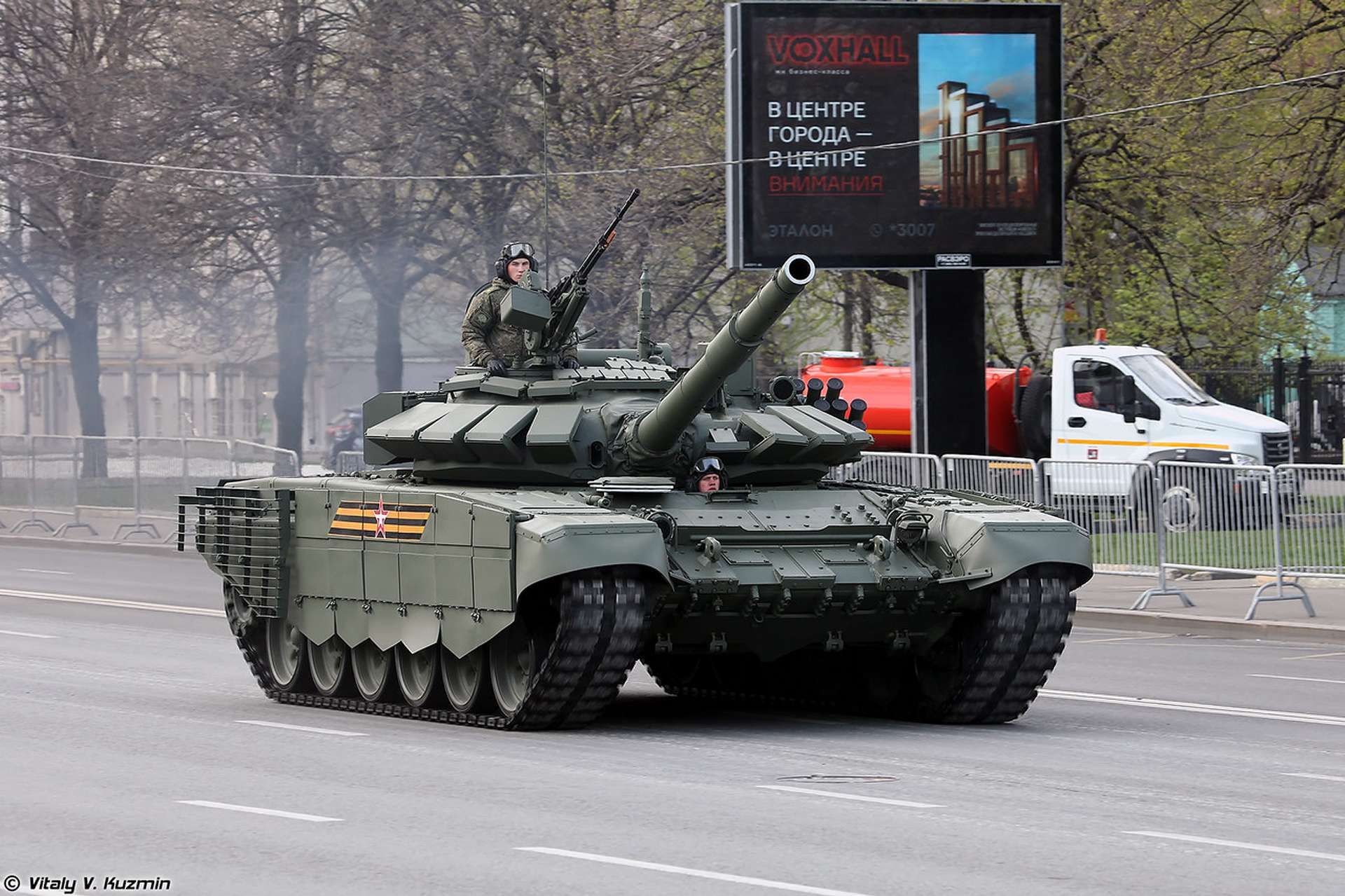Breaking news
Russian Army transforms captured Ukrainian T-72AMT tank into remote-controlled tank.
As reported by Russian media on June 10, 2024, the Russian Army is currently testing remote-controlled tanks, also known as RTKs, including a captured Ukrainian T-72AMT, now designated "Vasya." This initiative, which took place in the Zaporizhzhia region, involves modifying existing equipment to incorporate remote control capabilities, indicating a strategic move toward integrating unmanned vehicles such as the Uran-9 and the T-72B3 Sturm into military operations to compensate for human losses in Ukraine.
Follow Army Recognition on Google News at this link

The decision to adapt captured tanks such as this T-72AMT instead of awaiting the deployment of previously planned Remote-Controlled Tanks (RTKs) has generated debate within the Russian defense community. (Picture source: Russian media)
A video shared on a Russian Telegram channel shows the T-72AMT tank being operated by a two-person crew: one handling movement and maneuvering, and the other controlling the weapon system using equipment typically found in FPV drones.
Surprisingly, the decision to adapt captured tanks instead of awaiting the deployment of previously planned Remote-Controlled Tanks (RTKs) has generated debate within the Russian defense community. Some voices express concerns that these actions could impact the military-industrial complex, potentially disrupting long-term research and development projects. They urge the new Minister of Defense to address these efforts and highlight the importance of supporting established design bureaus and research institutes.
Remote-controlled tanks can offer several strategic advantages for Russian forces in Ukraine. By reducing the need for human operators in high-risk environments, these tanks minimize the exposure of personnel to frontline combat, thus preserving manpower and reducing casualties. This capability is especially valuable for reconnaissance missions in dangerous or unknown terrains, enhancing the safety and effectiveness of intelligence-gathering operations.
The integration of remote-controlled tanks with other unmanned systems, such as drones, allows for a more coordinated battlefield strategy. This synergy between aerial and ground vehicles improves target engagement and operational efficiency. Equipped with advanced technologies like automated turrets and precision-guided munitions, remote-controlled tanks can perform various roles, from direct combat support to logistical tasks, making them versatile tools in military operations.
Moreover, remote-controlled tanks offer a cost-effective solution in prolonged conflicts by reducing the logistical burden associated with human crews. They enable sustained operations even under heavy enemy fire or in hazardous environments, ensuring continuous operational capability. These advantages make remote-controlled tanks a valuable asset for Russian forces in maintaining prolonged military campaigns in Ukraine.

The T-72AMT, an upgraded version of the T-72A main battle tank developed by the Kyiv Armored Plant, incorporates improvements based on the combat experience of Ukrainian forces in the Donetsk and Luhansk regions (oblasts) under the control of Russian military forces and pro-Russian separatists. (Picture source: Army Recognition)
The base of this RTK, the T-72AMT, is an upgraded version of the T-72A main battle tank, developed by the Kiev Armored Plant in Ukraine. This variant incorporates improvements based on the combat experience of Ukrainian forces in the Donetsk and Luhansk regions (oblasts) under the control of Russian military forces and pro-Russian separatists. The T-72AMT features a 125mm 2A46 smoothbore gun that fires armor-piercing fin-stabilized discarding-sabot (APFSDS) rounds, high-explosive anti-tank fin-stabilized (HEAT-FS) rounds, and high-explosive fragmentation fin-stabilized (HE-FRAG-FS) rounds. Additionally, it can launch the ‘Combat’ laser-guided missile, capable of penetrating 750mm of armor at a range of up to 5 kilometers.
The T-72AMT includes new digital radio stations from Aselsan and Lybid K2, enhancing communication with infantry units. It is equipped with third-generation night vision devices for all crew members, and the gunner has a rearview camera and night vision sight for targeting. The tank has upgraded armor, a power pack at the rear, and features a satellite navigation system. It also supports underwater driving capabilities.

The Russian Army has been actively developing and deploying RTKs, particularly focusing on the Uran-9 UGV, a semi-autonomous vehicle designed for reconnaissance and fire support missions. (Picture source: Vitaly Kuzmin)
The Russian military has been actively developing and deploying RTKs, particularly focusing on the Uran-9 model. The Uran-9 is a semi-autonomous vehicle designed for reconnaissance and fire support missions. It is equipped with a 30mm automatic cannon, Ataka anti-tank missiles, and Shmel flamethrowers. This tank can be remotely controlled from up to 1.8 miles away and is intended to support infantry units rather than operate independently.
The Russian Zapad-2021 military exercises demonstrated the integration of robotic systems with human-operated units, as the Uran-9 provided covering fire and engaged targets alongside motorized rifle units. Despite its advanced armament and its capacity to launch guided missiles and perform coordinated attacks during the Zapad-2021 exercises, the Uran-9 has faced challenges during field tests. In Syria, its performance was hindered by issues with its remote control system, limited sensor range, and problems with stability and responsiveness. These shortcomings have led to further modifications and additional testing by the Russian military to improve its operational effectiveness.

Uralvagonzavod (UVZ) has also begun testing the Sturm remote-controlled tank, built on the T-72B3 tank chassis and intended for deployment on the Ukrainian frontline. (Picture source: Vitaly Kuzmin)
As previously reported by Army Recognition, Uralvagonzavod (UVZ) has also begun testing the Sturm remote-controlled tank, built on the T-72B3 tank chassis and intended for deployment on the Ukrainian frontline. The development of this unmanned tank by UVZ commenced before the onset of the Ukrainian conflict, but recent developments appear to have accelerated its progress. The testing program includes live-fire exercises against various target scenarios, focusing on the utilization of the robot's primary armament, a 125-millimeter shortened barrel gun.
The Sturm project, commissioned at the request of the Russian Ministry of Defense, utilizes automation technologies from the T-14 Armata tank, which was also planned to be produced in an unmanned version. However, the decision was made to base the new robotic tank on the older yet cost-effective T-72B3 platform. The T-72B3 is an upgraded version of the T-72B tank currently in service with the Russian army. Enhancements include a 125mm 2A46M-5 smoothbore gun, equipped with a light-alloy thermal sleeve and bore evacuator. The guided weapon system allows both the gunner and commander to launch laser-guided missiles, including the 9M119 AT-11 'Svir' or 9M119M Refleks, for a maximum range of 5,000 meters during both day and night operations.
The Sturm RTK project encompasses four distinct combat vehicle types. The first variant features a 125-millimeter gun with a shortened barrel, while the second is designed for missiles or a rocket-propelled infantry flamethrower with a thermobaric Shmel-M warhead. The third iteration involves converting the Terminator fire support vehicle into a robotic version, equipped with two 30-millimeter guns, deploying thermobaric missiles instead of anti-tank missiles. At the Army-2023 forum, UVZ presented a T-72-based variant of the Terminator tank support vehicle (BMPT), suggesting the potential for upgrading decommissioned T-72 tanks into combat-ready vehicles comparable to the BMPT. The fourth variant envisions an unmanned vehicle operating in conjunction with the TOS-1A thermobaric rocket launcher system.


























